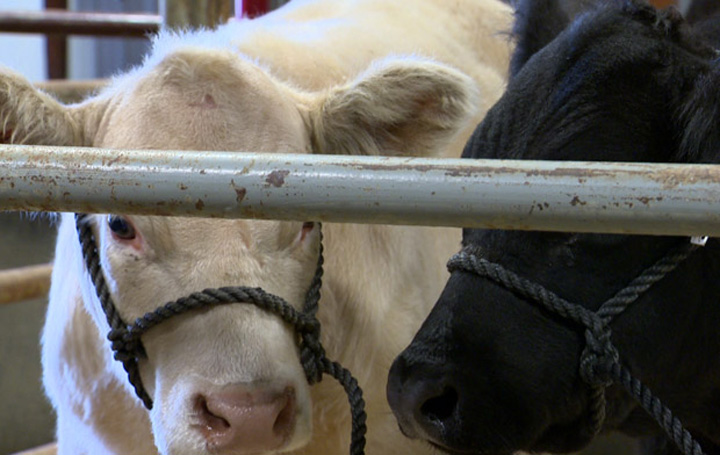CALGARY – Don’t expect to be paying less for your burgers and steaks any time soon, according to industry experts who cite record-high slaughter prices along with ongoing climate and other challenges faced by ranchers.

“There’s always lags in the system and for prices in stores,” said Rich Smith, executive director of the Alberta Beef Producers.
According to Statistics Canada data released Monday, the price at slaughter for 100 pounds of Alberta beef rose to $192.80 in May. That’s a 36 per cent jump from May 2014 and now stand as the highest price on record.
READ MORE: The ‘new reality’ for meat lovers: steak sticker shock
Smith said that he had expected Canadian producers to start increasing herd sizes this year to help meet demand, but continuing drought conditions in Canada’s cattle heartland have made that impossible.
“Everybody’s very nervous,” said Smith. “These dry conditions are certainly not going to encourage people to expand their cow herds when they’re already short of grass.”
Roughly 80 per cent of the Prairies is experiencing drought, according to Trevor Hadwen, an agroclimate specialist at Agriculture and Agri-Food Canada, with some areas in eastern Alberta and western Saskatchewan receiving less than 40 per cent of their usual rainfall.

Get weekly money news
READ MORE: Beef leads the jump in food prices across Canada
He said some areas around Saskatoon and Regina are actually the driest on record.
“A lot of people are comparing this year to 1961, which was a very large drought year,” said Hadwen.
The dry conditions have meant that grass pasture and hay stocks haven’t grown enough and producers are scrambling to find ways to feed their cattle.
“Livestock producers are in terrible shape,” said Norm Hall, president of the Agricultural Producers Association of Saskatchewan.
“The west half of the province is dry, and the east half, where there was that moisture, got hit really hard by the frost in mid-May, and there just really isn’t much of a hay crop out there, or pasture.”
READ MORE: High meat prices affecting local businesses
Hall said farmers are having to feed their other crops to cattle, or dip into winter grain stores.
“Guys are going to be scrambling for winter feed,” said Hall.
The demand for feed has also driven hay prices significantly higher according to Dallas Rodger, a market analyst at livestock analysis firm Canfax.
“A lot of guys are saying hay prices are double what they were last year,” said Rodger.
READ MORE: Where’s the beef (from)? Tracking meat from farm to fork
He said that the lack of crop growth and affordable feed is causing some producers to sell off parts of their herd early.
“With limited supply of grass available, guys are having to pull cattle off earlier…to preserve or maintain what grass is there,” said Rodger.
Smith said he hasn’t yet seen an increase in cattle sales because of the drought, but if conditions continue it could certainly go up, which won’t help prices going forward.
“If you’re selling your cows then you’re not raising calves, so over the longer term that reduces the supply of beef that will be available.”

Comments